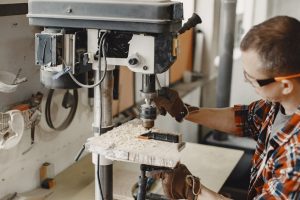Introduction
Home furnishing manufacturing automation refers to the use of advanced technologies and robotic systems to automate various processes involved in the manufacturing of home furnishings such as furniture, textiles, bedding, and decorative items. This automation aims to streamline production, improve efficiency, reduce costs, and enhance product quality.
Possible Areas of Automation
Some of the possibilities wherein automation can be readily implemented in home furnishing manufacturing set-ups are cutting, assembly, sewing, finishing, quality control, inventory and material management.
Automated cutting machines use computer-controlled systems to cut fabrics, leather, or other materials with precision and speed. These machines can follow digital patterns and optimize material usage, reducing waste and improving accuracy.
Robotic as well as semi-automatic systems can be employed to assemble furniture pieces, including chairs, tables, cabinets, and beds. These robots are programmed to handle specific tasks, such as fastening, drilling, gluing, or painting, improving consistency and reducing manual labour requirements.
Automated sewing machines are capable of performing intricate stitching patterns on fabrics, cushions, or upholstery. These machines can be programmed to replicate complex designs accurately and quickly, leading to higher productivity and consistent quality.
Automation can be utilized for processes like sanding, polishing, painting, and coating. Robotic arms equipped with various tools can perform these tasks with precision, ensuring uniform finishing and minimizing defects. For the soft goods quite a few automated solutions are available to handle finishing and packing needs.
Machine vision systems can be integrated into the manufacturing process to inspect and detect any defects or inconsistencies in the finished products. These systems use cameras and image analysis algorithms to identify imperfections, ensuring that only high-quality items reach the market.
Automation can be applied to inventory control and management processes. This includes the use of RFID (Radio Frequency Identification) technology to track and manage stock levels, automated picking systems, and intelligent warehousing systems that optimize space and streamline logistics.
Material handling systems can help factories to respond to the market demands dynamically. Ready to stitch pieces can be stored utilizing the vertical spaces available the manufacturing setups. Specific units required to fulfil market demand can be prioritized over routine production schedules.

Challenges and Conclusion
Overall, home furnishing manufacturing automation offers several benefits, including increased productivity, improved product consistency, reduced labour costs, enhanced quality control, and faster time-to-market. It also enables manufacturers to respond to customer demands more efficiently and adapt to changing market trends.
Implementing automation in home furnishing manufacturing can bring numerous advantages, but it also presents certain challenges. Two main challenges that manufacturers may face are related to investment and integration expertise.
Automation often requires moderate to high upfront investment in machinery, equipment, and technology. This cost can be a barrier for smaller manufacturers or those with limited financial resources. Although it is progressively going down.
Integrating automation into existing manufacturing processes requires thorough analysis and careful expert planning. It may require modifying the layout of the production floor, retraining employees to work alongside automated systems, and integrating different machines and software systems.
Overcoming these challenges requires careful planning, adequate investment, employee training and involvement, collaboration with automation experts, and a long-term strategic vision. Despite the challenges, successful implementation of automation in home furnishing manufacturing can result in improved efficiency, cost savings, and a competitive edge in the industry.
Read our article on automation and digitisation by clicking in this link.


Leave a Comment